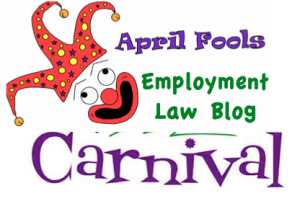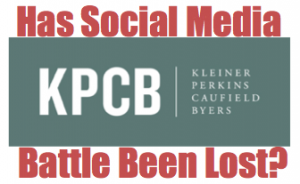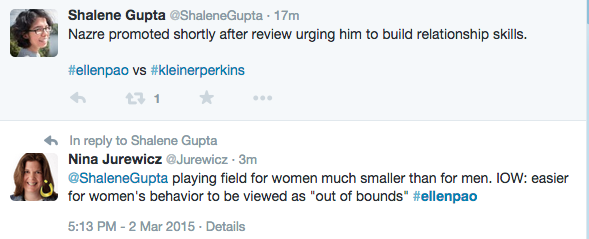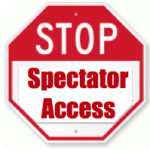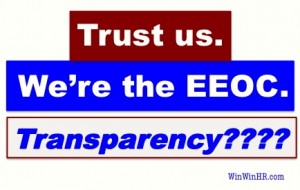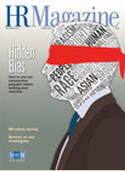 The Securities and Exchange Commission (“SEC”) just issued a press release announcing its “first enforcement action against a company for using improperly restrictive language in confidentiality agreements with the potential to stifle the whistleblowing process.”
The Securities and Exchange Commission (“SEC”) just issued a press release announcing its “first enforcement action against a company for using improperly restrictive language in confidentiality agreements with the potential to stifle the whistleblowing process.”
At issue, was KBR, Inc.’s standard practice of requiring employees interviewed in internal investigations to sign confidentiality statements with the following language:
“I understand that in order to protect the integrity of this review, I am prohibited from discussing any particulars regarding this interview and the subject matter discussed during the interview, without the prior authorization of the Law Department. I understand that the unauthorized disclosure of information may be grounds for disciplinary action up to and including termination of employment.”
The SEC found those terms violated Rule 21F-17, which prohibits companies from taking any action that would impede whistleblowers from reporting possible securities violations to the SEC.
In addition to agreeing to pay a fine of $130,000, KBR, Inc. also agreed to amend its standard confidentiality statement signed by employees interviewed during an internal investigation to read as follows:
“Nothing in this Confidentiality Statement prohibits me from reporting possible violations of federal law or regulation to any governmental agency or entity, including but not limited to the Department of Justice, the Securities and Exchange Commission, the Congress, and any agency Inspector General, or making other disclosures that are protected under the whistleblower provisions of federal law or regulation. I do not need the prior authorization of the Law Department to make any such reports or disclosures and I am not required to notify the company that I have made such reports or disclosures.”
A copy of the complete Cease and Desist Order is available here.
SEC Not Only Governmental Agency Concerned About Overly Broad Confidentiality Requirements in Internal Investigations
NLRB on Confidentiality
One of the first blogs I published was about confidentiality in internal investigations. That was July 2012 and the National Labor Relations Board had just held that a blanket approach and policy requiring confidentiality during all internal workplace investigations violates employees’ concerted activity rights under Section 7 of the National Labor Relations Act (NLRA).
In April 2013, the NLRB’s Office of the General Counsel released an Advice Memorandum that I wrote about here. The Advice Memo provided additional clarification on its position on confidentiality in workplace investigations and suggested the following policy language that would be in compliance with Section 7 of the NLRA:
“[Employer] may decide in some circumstances that in order to achieve these objectives, we must maintain the investigation and our role in it in strict confidence. If [Employer] reasonably imposes such a requirement and we do not maintain such confidentiality, we may be subject to disciplinary action up to and including immediate termination.”
EEOC on Confidentiality
It has long been the position of the Equal Employment Opportunity Commission that when investigating complaints of harassment or other inappropriate behavior in the workplace, an employer should keep the matter confidential to the extent possible. This stance was included in its policy guidance issued in 1990 on sexual harassment and again in its 1999 guidance on vicarious employer liability for unlawful harassment by supervisors in which the EEOC stated that an anti-harassment policy and complaint procedure should include “assurance that the employer will protect the confidentiality of harassment complaints to the extent possible.”
The EEOC though is also concerned that overly broad standard confidentiality requirements may be illegal if such policy is so broad that a reasonable employee could conclude from reading it that she could face discipline or charge for making inquiries to the EEOC about harassment if that harassment is being or has been investigated internally by your organization. Here is the blog I wrote about the EEOC’s concern.
Insights for Employers
Confidentiality continues to be a critical aspect of the vast majority of internal workplace investigations. It is critical for any number of reasons, including protecting witnesses from harassment, intimidation and retaliation, keeping evidence from being destroyed, ensuring that testimony is not fabricated, and preventing cover-ups. If the internal investigation is being conducted pursuant to the attorney-client privilege in order for an attorney to provide legal advice to the employer, confidentiality is also critical to maintain the protection of the attorney-client privilege as well as under the attorney work product doctrine.
As such, it is imperative that employers be able to lawfully enforce their confidentiality policies and practices when the need arises.
Here are four suggestions for addressing the need for confidentiality in certain internal investigations without running afoul of the SEC, NLRB or EEOC.
1. Employers are encouraged to review their existing policies and practices and modify the language, as appropriate, to mirror the language approved by the SEC in the Cease and Desist Order with KBR, Inc. and the suggested language provided by the NLRB.
2. Employers may also wish to implement a practice of documenting, on a case-by-case basis, the reasons for deciding to instruct witnesses to keep an investigation confidential. This is especially important if the investigation is being conducted pursuant to the attorney-client privilege in order to provide legal advice to the employer. In reading the Cease and Desist Order entered with KBR, Inc. the issue of the intersection with the attorney-client privilege and Rule 21F-17 is not addressed. Click here for more tips and templates for preserving the attorney-client privilege in internal investigations.
3. For those employers who conduct internal investigations in-house, ensuring that their investigators keep their skills up-to-date is also crucial. Workplace Investigations Group offers training courses in various locations through the year. Customized training for employers and organizations that wish to train larger groups at their own locations is also available.
4. For employers who do not have professional staff with the experience, knowledge, and expertise to conduct legally defensible workplace investigations, I suggest they proactively identify an outside investigator who possesses these qualifications. Workplace investigators are kind of akin to plumbers – you hope to never to need one, but when you do need one you need a good one and you need them fast.
One great source for experienced, well-qualified attorney investigators is Workplace Investigations Group. All of the attorney investigators at Workplace Investigations Group meet or exceed the following qualification criteria:
- Minimum of 10 years experience in employment law.
- J.D. from an accredited law school.
- Have professional liability insurance.
- Experience in conducting 10+ internal workplace investigations or comparable relevant experience or training.
- Are an attorney in good standing in at least one jurisdiction.
UPDATE: For readers interested in other perspectives on the SEC’s Cease and Desist Order entered into with KBR, you may want to read the article in Corporate Counsel: SEC’s KBR Action Spotlights Whistleblower Confidentiality. I’m quoted as are attorneys from the law firms of Sherman & Sterling and Gibson, Dunn & Crutcher. The article is free to read but you will need to sign up for a Corporate Counsel account if you do not already have one.





